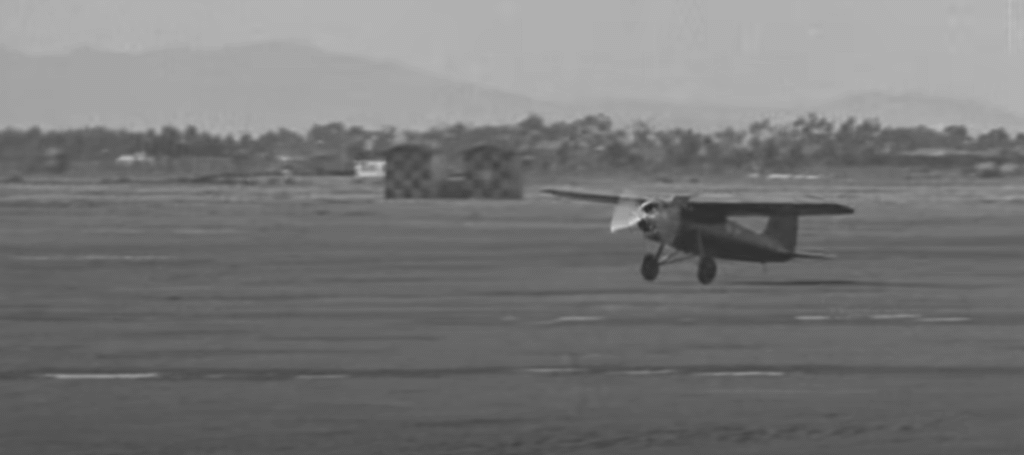One of the most persistent mysteries in history has been rekindled by the abrupt order for FBI personnel to look for any documents pertaining to Amelia Earhart. The name Amelia Earhart reverberates through government corridors nearly ninety years after her disappearance, carrying with it the same blend of mystery, motivation, and tension that initially captivated the public.
The FBI’s field offices in Washington and New York were instructed in recent days to find any paper or digital records that could be related to Earhart’s last flight immediately. The Executive Office of the President made the “priority” request directly. During a federal government shutdown, agents were forced to search through long-forgotten archives and storage rooms—a very uncommon move.
According to reports, President Donald Trump issued the order to declassify all government records connected to Earhart. Trump has previously advocated for the release of high-profile historical files, including those pertaining to the Kennedy assassinations. “Millions have been captivated by her disappearance,” Trump wrote on Truth Social, vowing to shed light on what he called “a mystery that belongs to the American people.” His choice has aroused interest and conjecture, causing a stir of enthusiasm among conspiracy theorists, journalists, and historians.
Amelia Earhart – Biography and Background
| Category | Details |
|---|---|
| Full Name | Amelia Mary Earhart |
| Birth Date | July 24, 1897 |
| Birthplace | Atchison, Kansas, USA |
| Occupation | Aviator, Author, Lecturer |
| Famous Achievement | First female pilot to fly solo across the Atlantic Ocean |
| Disappearance | July 2, 1937, during attempt to circumnavigate the globe |
| Aircraft | Lockheed Model 10-E Electra |
| Last Known Location | Vicinity of Howland Island, Pacific Ocean |
| Declared Lost | July 19, 1937 |
| Ongoing Investigation | FBI Search (2025) for missing records related to her disappearance |
| Reference | FBI Vault |

Earhart’s tale is still incredibly powerful at spanning generations. Soaring through a sky still dominated by men, she was more than just an aviator; she was a symbol of equality and ambition. Her attempt to fly around the world in 1937 was the pinnacle of her ingenuity and perseverance. But her plane disappeared over the Pacific. Wreckage and remains were never found during the 16-day search that followed, which was one of the longest of its kind.
Technology has enabled the FBI to investigate long-standing mysteries with previously unheard-of accuracy, which coincides with the recently launched search. Researchers have significantly increased their ability to find wrecks in deep-sea areas by utilizing satellite-based ocean scans, AI-assisted sonar mapping, and sophisticated imaging systems. In recent years, a number of private expeditions have already discovered metallic debris close to Nikumaroro Island, which some experts think could be connected to Amelia Earhart’s plane. Despite being unverified, these hints have greatly rekindled optimism.
However, the FBI’s involvement adds a very political element. In response to public demands for transparency, it is in line with a larger trend of reexamining historical records that have been long-archived. By 2025, these government programs have evolved into especially creative means of rebuilding faith in history as well as in institutions. Finding out what happened to Amelia Earhart feels like reclaiming a fragment of the country’s incomplete identity for many Americans.
The renewed search for aviation historians is about more than just finding answers. It’s also about recognizing how Earhart changed how people today view bravery and tenacity. In a time when female pilots were frequently written off as novelty, she broke stereotypes. She was one of the first international symbols of female empowerment because of her friendship with Eleanor Roosevelt and her outspoken speeches about gender equality. Her story gains emotional depth from the fact that her disappearance is still unsolved, making her life a cautionary tale as well as an inspiration.
The legacy of Amelia Earhart is still very relevant in today’s culture. Every pioneering pilot and astronaut who came after her was influenced by her. For example, Christina Koch of NASA has frequently referenced Earhart as an early role model, comparing the open sky to space. Her mythos is still being revived in popular culture, from documentaries to fictional representations that show her as a timeless symbol of curiosity and tenacity.
Analysts are now wondering what exactly might still be concealed in government files as a result of the federal order. Law enforcement sources claim that agents are concentrating on closed and classified cases that may contain information that has been lost for decades. According to some, diplomatic decisions regarding the initial 1937 search may be revealed in international correspondence between the United States and Pacific territories. Others think the search might turn up eyewitness accounts or private letters that have been forgotten in field office archives for a long time.
However, not everyone has a positive opinion of the new initiative. Some view these declassification campaigns as incredibly advantageous chances for historical restoration, while others contend that they can be politically motivated diversion. But even cynics concur on one thing: Amelia Earhart’s story captures the public’s attention like few others do. She stands for the meeting point of mystery and bravery, a combination of tragedy and triumph that has a lasting impact.
Rekindling interest in legendary cases during a presidential administration is not new. Every generation appears to want more clarity on unresolved history, from the Kennedy assassination files to UFO disclosures. But what makes Earhart’s story unique is that it combines heartbreak and heroism. Her disappearance was a sign of human vulnerability in the face of nature’s vastness, not of political unrest or scandal.
